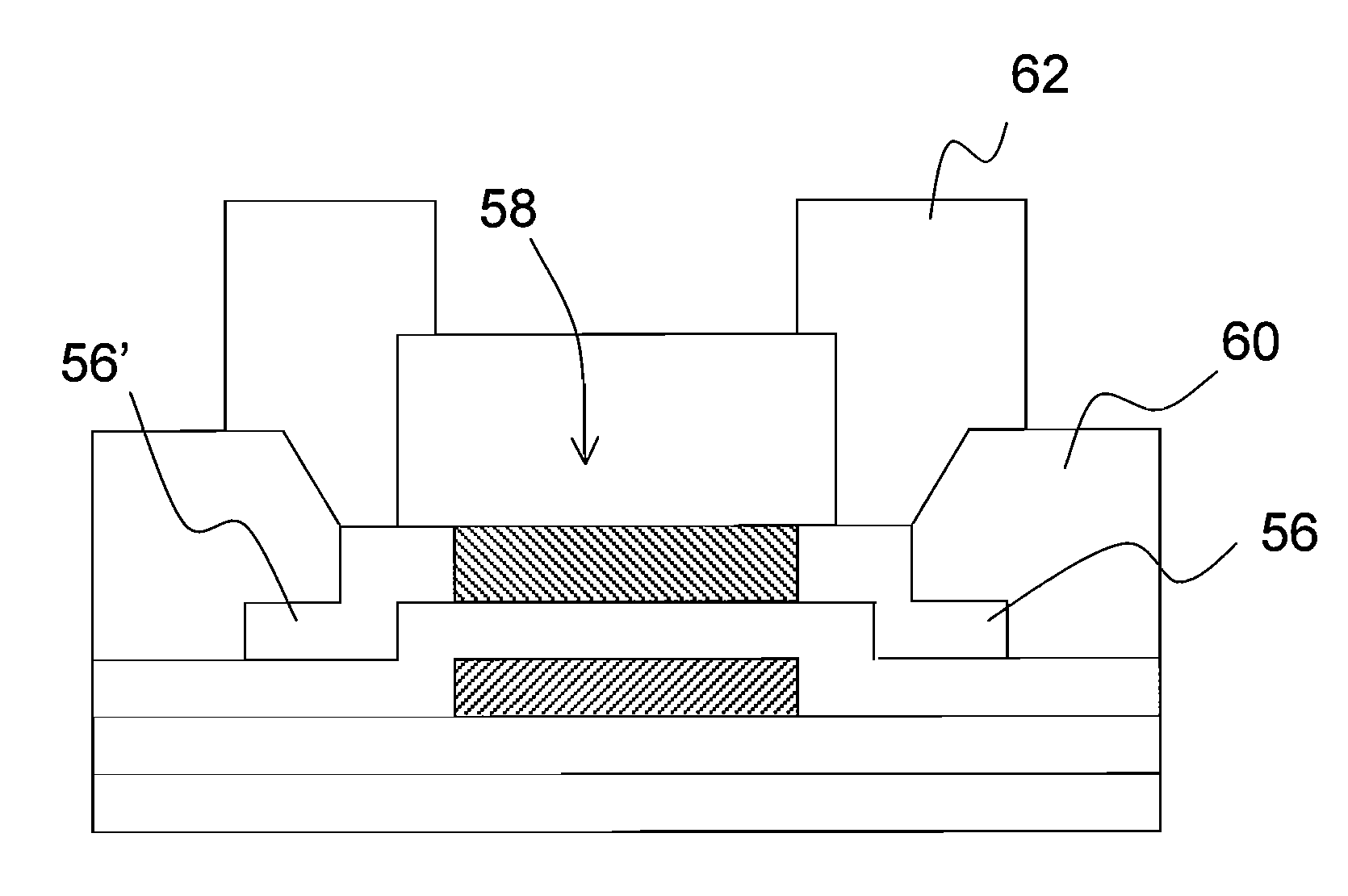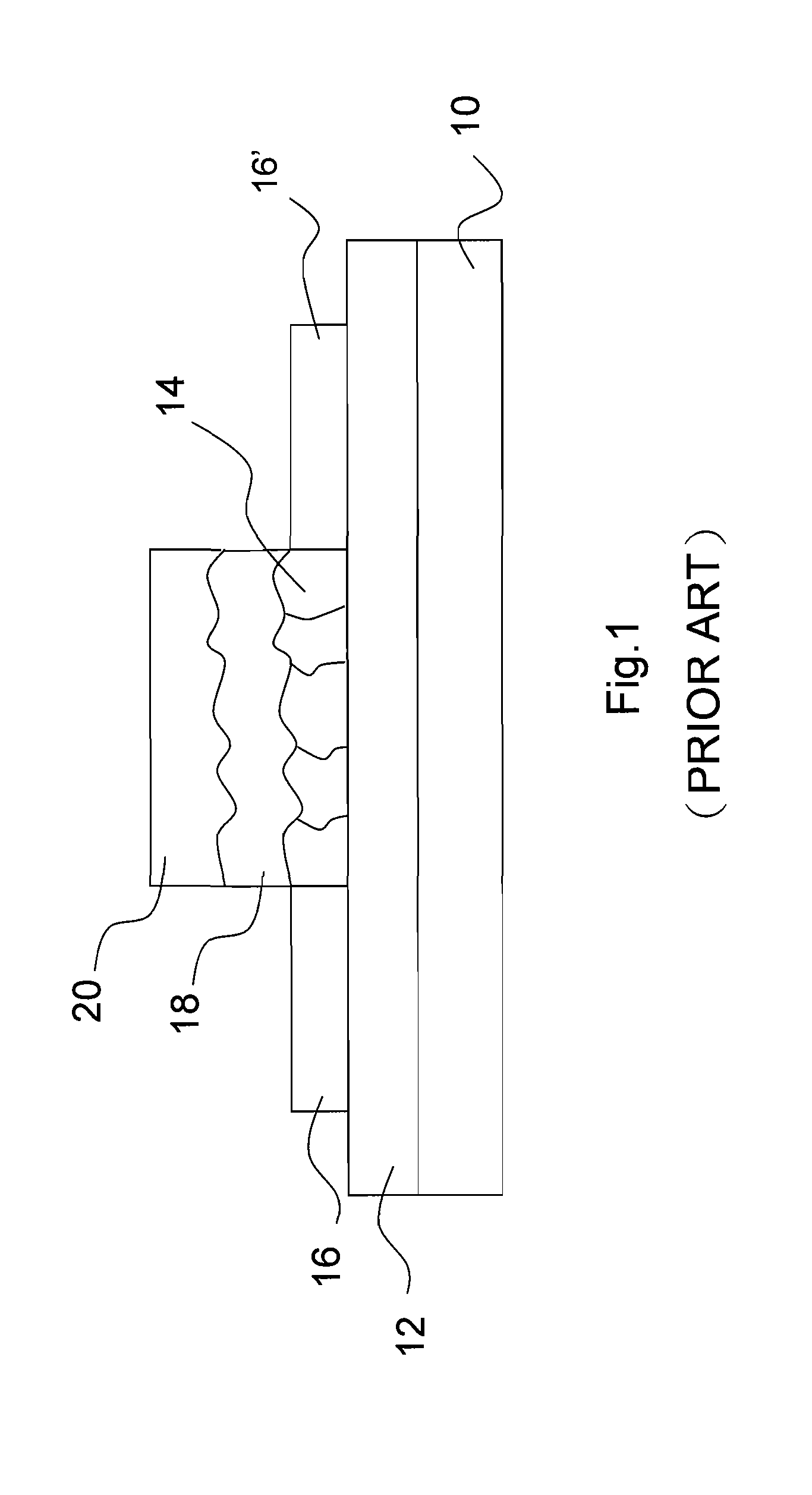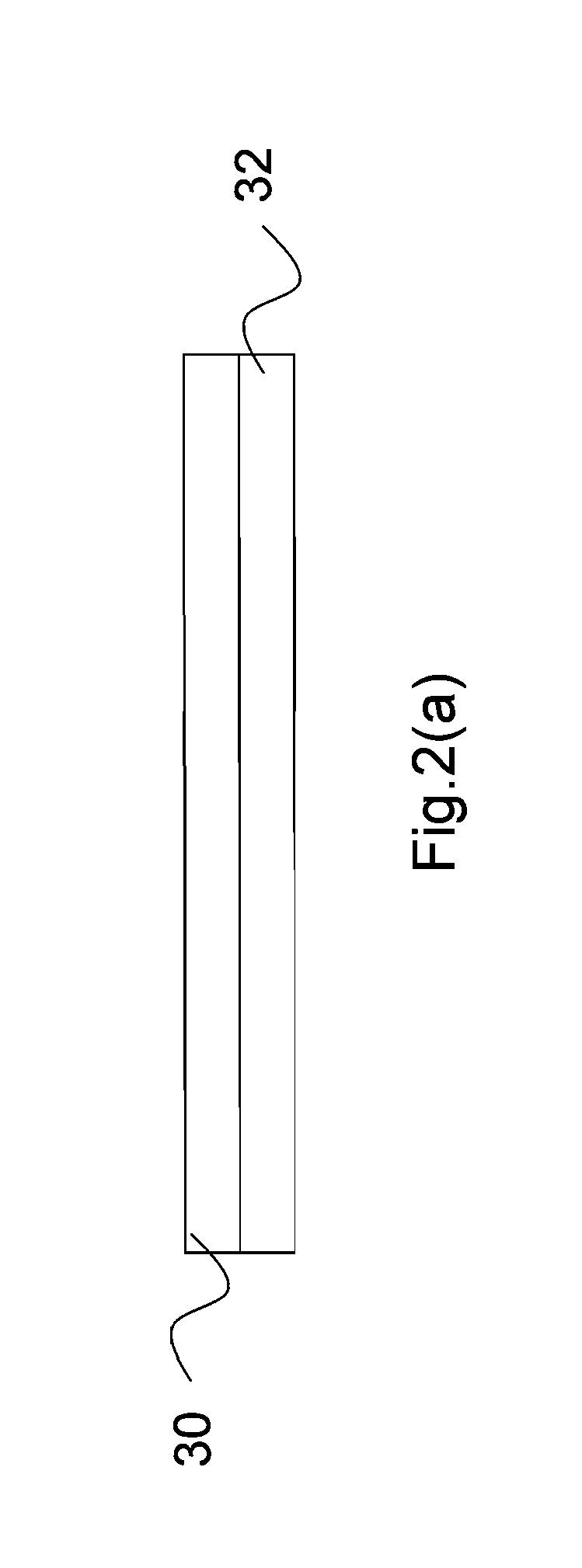Method for fabricating bottom-gate low-temperature polysilicon thin film transistor
a thin film transistor and low-temperature technology, applied in the direction of semiconductor devices, basic electric elements, electrical equipment, etc., can solve the problems of reducing carrier mobility and electric performance, affecting the performance of existing polysilicon layers, and blending too many tiny crystal grains with big crystal grains, so as to promote carrier mobility
- Summary
- Abstract
- Description
- Claims
- Application Information
AI Technical Summary
Benefits of technology
Problems solved by technology
Method used
Image
Examples
Embodiment Construction
[0021]Refer to from FIG. 2(a) to FIG. 2(e) diagrams schematically showing the steps of fabricating a low-temperature polysilicon layer on a substrate with a bottom gate according to the present invention.
[0022]As shown in FIG. 2(a), a silicon substrate 32 with an oxide layer 30 is provided; alternatively, the substrate may be made of a glass or plastic. Next, as shown in FIG. 2(b), a gate layer 34 is formed on the oxide layer 30; the gate layer 34 may be a metal layer; alternatively, the gate layer 34 may be obtained via the following steps: decomposing monosilane (SiH4) and hydrogen phosphide (PH3) at 550° C. to form a phosphorus-doped polysilicon layer with a low-temperature CVP (Chemical Vapor Deposition) method, and fabricating the polysilicon layer into the gate layer 34 having the designed pattern with a photolithographic process, wherein the photolithographic process can be implemented with a transformer coupled plasma, and the gate layer 34 has a thickness of between 30 and ...
PUM
| Property | Measurement | Unit |
|---|---|---|
| thickness | aaaaa | aaaaa |
| thickness | aaaaa | aaaaa |
| thickness | aaaaa | aaaaa |
Abstract
Description
Claims
Application Information
 Login to View More
Login to View More - R&D
- Intellectual Property
- Life Sciences
- Materials
- Tech Scout
- Unparalleled Data Quality
- Higher Quality Content
- 60% Fewer Hallucinations
Browse by: Latest US Patents, China's latest patents, Technical Efficacy Thesaurus, Application Domain, Technology Topic, Popular Technical Reports.
© 2025 PatSnap. All rights reserved.Legal|Privacy policy|Modern Slavery Act Transparency Statement|Sitemap|About US| Contact US: help@patsnap.com



